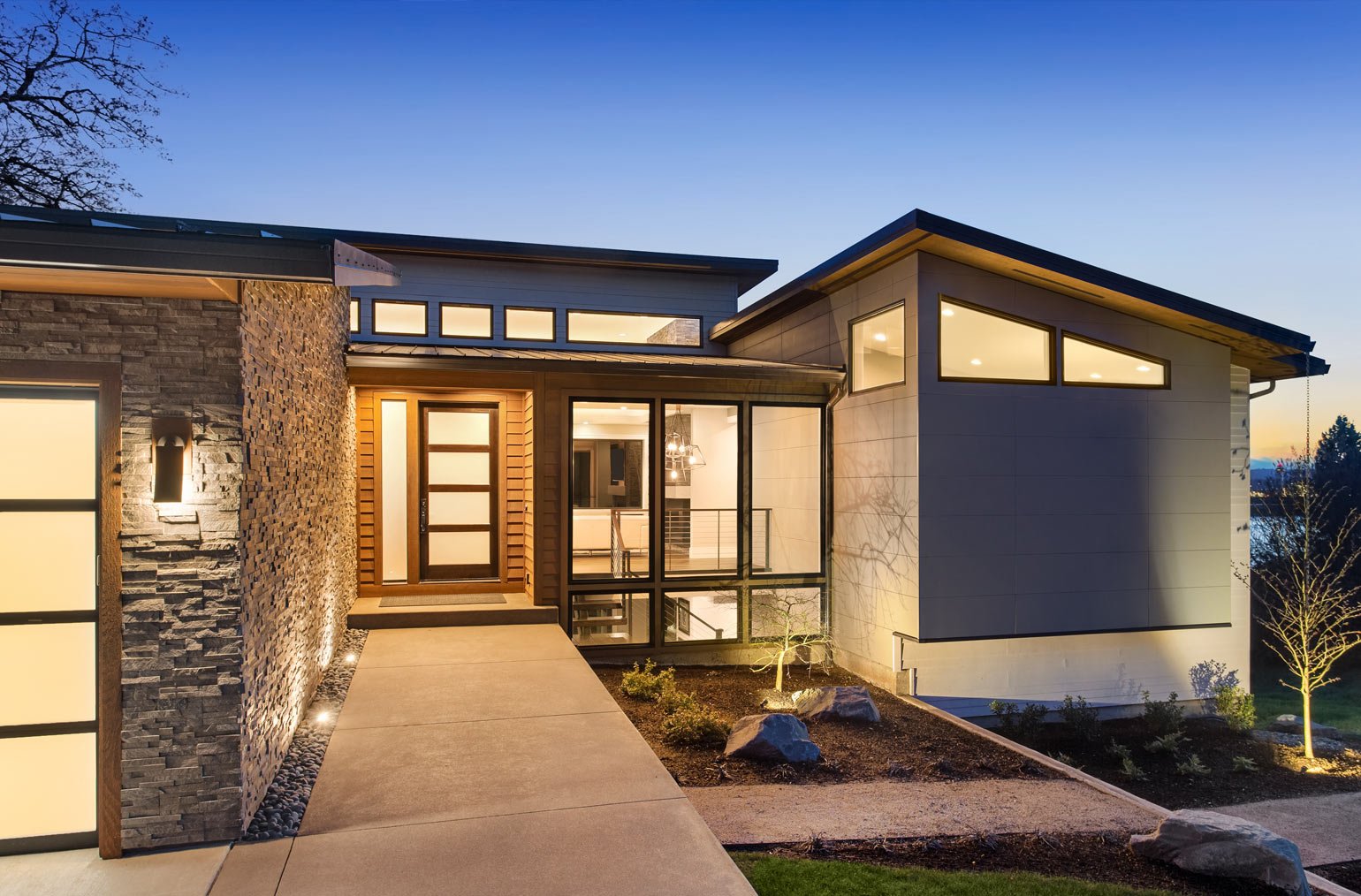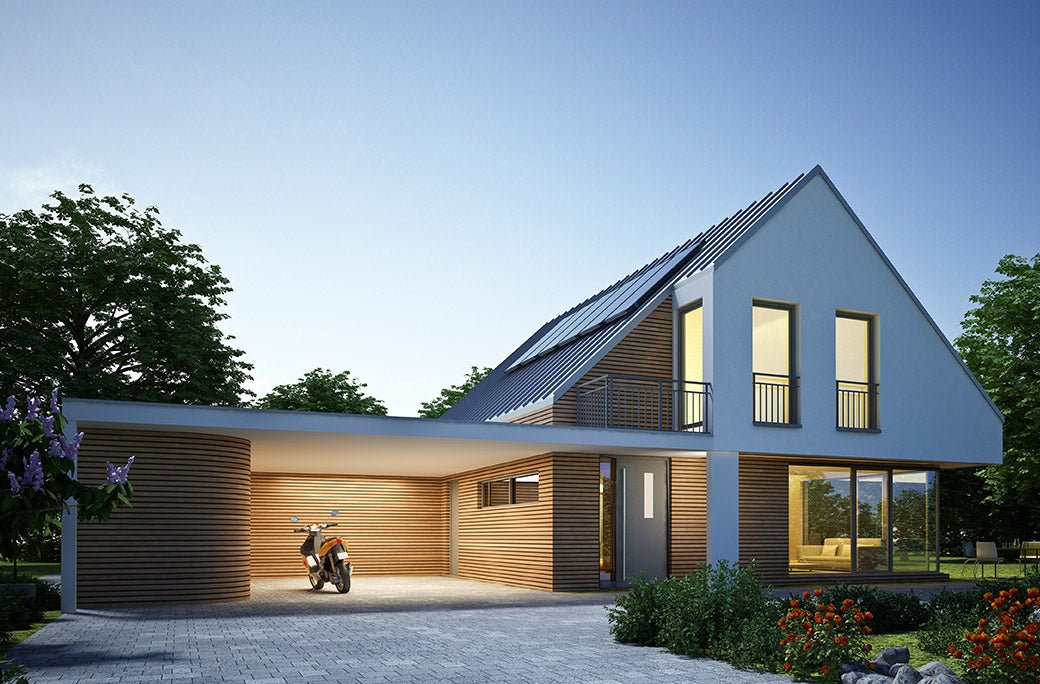Landscaping on a slope can be a challenge. Whether the incline is slight or very steep, sloping ground often poses problems. And yet, there are some serious advantages to it, as the slope can add a certain charm to your garden. With a few tricks and a little creativity, you can turn this disadvantage into a real advantage. Here are our tips for designing a sloping garden and enhancing it with the right outdoor lighting.
The right lighting for an attractive, practical space
Sloping terrain isn't all bad news. It can even be a positive factor , adding value to your home if you decide to design it with taste and ingenuity. The key to this is good lighting.

Illuminated beacons for safe driving
To get around your sloping property safely, you'll need to illuminate key features, such as stairways. If you have any, they need to be indicated by appropriate lighting. Lumihome offers recessed LED spotlights. Available in 230V or solar-powered versions, they can be used to delimit areas effectively, for easy circulation, day and night. If you've opted to create successive landings, you can also illuminate them with outdoor bollards, like our Pyramid bollards.
No electrical installation beforehand? Simply opt for solar power and place Lumihome solar bollards in strategic locations. "As powerful as 230V models, they'll make you change your mindReviews on solar lighting, says Christophe Coelho. Equipped with a monocrystalline solar collector, Lumihome solar bollards also feature LED lighting and an ultra-powerful battery, for a continuous intensity that differs greatly from the usual products on the market."
Whatever your lighting solutions, whether 230V or solar-powered, don't forget to choose products adapted to outdoor conditions. All Lumihome lamps are designed to resist external aggression, humidity, wind and corrosion. Powerful and efficient, they also last the test of time, for maximum ease of maintenance.

Lighting to highlight the vegetation
Sloping ground is also an opportunity to plant many different species of plants, flowers and trees. To show them off to their best advantage, or simply to mark out a flowerbed, quality lighting is essential. You can opt for Lumihome's 230V LED spotlights. They're easy to install, as they're stitched right into the material, and are ideal for lighting a specific area, highlighting a particular feature, or even marking out a path or contour. Their discreet luminous flux is designed to create a refined, subtle effect. "To enhance your shrubs or flowerbeds, you can also opt for the 230V RGB CCT outdoor LED spotlight, adds Christophe Coelho. Designed in stainless steel, it features a dual LED system for custom lighting and intense colorimetry." Finally, once again, if you want to highlight a tree or shrub, and your sloping ground doesn't have the right electrical installation, solar power may be an alternative. Discover the Daytona, Diva or Venus solar bollards and enjoy solar power all year round.
Landscaping a sloping site: simple cladding or creating successive landings?
Once again, there are several solutions for landscaping your sloping site.
How do you dress a slope without modifying it?
If you're lucky enough to have a stable site with a reasonable gradient, you can opt to dress your slope without any modifications. This avoids the need for costly earthworks. However, this option also has its drawbacks. Dressing the slope without modifying it will limit the choice of plant species due to soil erosion. What's more, access to your garden will not be easy, and will be a source of fatigue and difficulty for you.
Take advantage of the materials in your grounds, such as stones or rockeries, and play with them to stabilize your space and create a beautiful effect. You can also stage a waterfall. Sloping ground lends itself perfectly to this, and the effect will be even more surprising. Take a look at our lighting solutions for waterfalls and ponds.
How do you create successive levels?
You can also choose to create successive levels. This method consists of dividing your land into different levels, each held in place by a retaining device in the form of a masonry wall, wooden retaining wall, etc. The aim is to create a number of levels adapted to the slope, and to use the soil already present to avoid having to remove it or buy new soil. The aim is to create a number of levels adapted to the slope, and to use the soil already present to avoid having to evacuate or buy new soil.
Bear in mind that the first levels are intended for areas that require the most maintenance or that benefit from the most coming and going (e.g. vegetable or herb gardens). The last levels, on the other hand, are more suited to ornamental gardens or orchards. It's important to bear in mind that creating landings comes at a cost that shouldn't be overlooked. The work takes time and is only possible if the soil is deep enough. Finally, if your soil is rocky, you can forget about this option.
Good to know: You can also opt for a mix of these two solutions. Beyond the aesthetic aspect, don't forget to take into account the practical aspect. Accessibility must be considered from the outset of your project. Last but not least, safety is also a crucial factor. For example, if you have small children, the choice of successive landings could allow you to install guardrails to avoid accidents.
Developing a sloping site is not always easy. But it can be a real asset to your home if it's well thought out. Follow our advice and don't forget: your sloping garden needs to be aesthetically pleasing, but above all, practical!





























